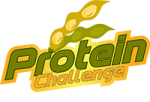Health
Protein Deficiency in a Pandemic: Top Ten Webinar Takeaways

Why is protein deficiency a growing problem across the world when large quantities of food go to waste? What can nations do to curb incidents of protein deficiency? What must Nigeria do?
Truth be told, there are no easy fixes. But experts adjudge that it would make sense to start with policies that support direct links between farmers and consumers, prioritize food security and encourage proper meal planning and nutrition education.
The Protein Challenge Webinar Series 4 with the theme: Protein Deficiency in a Pandemic provided a platform for Medical and Nutrition experts to dissect the issues. Here are Top Ten Takeaways from the session which held on Thursday, September 24, 2020:
- Malnutrition is prevalent in Nigeria. Malnutrition refers to deficiencies, excesses or imbalances in a person’s intake of energy and/or nutrients. It is also a group of conditions in children and adults related to poor quality, or insufficient quantity and quality, of nutrients intake, absorption or utilization.
- Proper meal planning and nutrition education are crucial to lessening malnutrition. Nutrition education is important because, knowing what foods to eat, which meal is cost-effective and healthy, is the foundation of a healthy lifestyle. Meal planning, using the food guide pyramid, groups foods into the nutrients they give and this improves the chances of having an adequate meal. To minimize waste there must be efficiency in the ways in which meals are prepared.
- Animal proteins are more expensive than plant proteins, because of the cost of rearing livestock. There are however some plant protein foods that are comparable to animal proteins, for example, soybeans. Soybeans contains all the essential amino acids which we need to combat protein deficiency in Nigeria. Groundnuts, locust beans and sesame seeds also contain a significant amount of proteins. Proteins have to be integrated into daily diets, even as people inculcate the culture of sourcing for local food options to improve diets.
- Two ways to ensure a healthy population and prevent protein deficiency are – eating underexploited foods and engaging in home gardening. There is an urgent need to go back to the days when every family had privately cultivated land for food crops, so that this will reduce the pressure on the available food for sale in the markets. Everyone cannot be chasing after the same food items, especially if there is a scarcity. Malnutrition is multi-factorial and several factors such as planting, storage and transportation of food need to be considered and balanced out to achieve any form of positive intervention.
- Since the COVID-19 pandemic and restrictions put in place to reduce the spread of the virus, there has been a decrease in access to food. The food supply chain cycle was disrupted when the lockdown happened. The lockdown protocol created a situation where farmers were unable to go to the farms, movement of the harvest was restricted, so food crops rotted in farms. Animal products take time to grow and process, and if there is a break in the supply chain, you need another cycle to be able to produce to meet up with demands.
- The lockdown meant that food production, supply and domestic food security were all affected. Anything that affects any of these factors will eventually affect malnutrition. The food supply chain was severely threatened: farmers, transporters and food sellers had their movements restricted, availability of food groups dropped, prices of food went up and household earnings went down.
- Moving forward, policies that support direct links between farmers and consumers should be encouraged, to strengthen food security. Food security is defined as the availability of food and one’s access to it. Commonly, the concept of food security is defined as including both physical and economic access to food that meets people’s dietary needs as well as their food preferences.
- Some forms of malnutrition can be treated using locally available foods such as Kwash-Pap, Dietrend and RUTF. Kwash-Pap is made using raw guinea corn pap, raw egg, banana, sugar, oil and milk. Dietrend is maize, groundnut and soybeans, while RUTF (Ready to Use Therapeutic Food) is made up of milk, peanuts, sugar, vitamins and minerals. All these are tried and tested methods of treating malnutrition.
There are some locally available and under-exploited foods in our

























